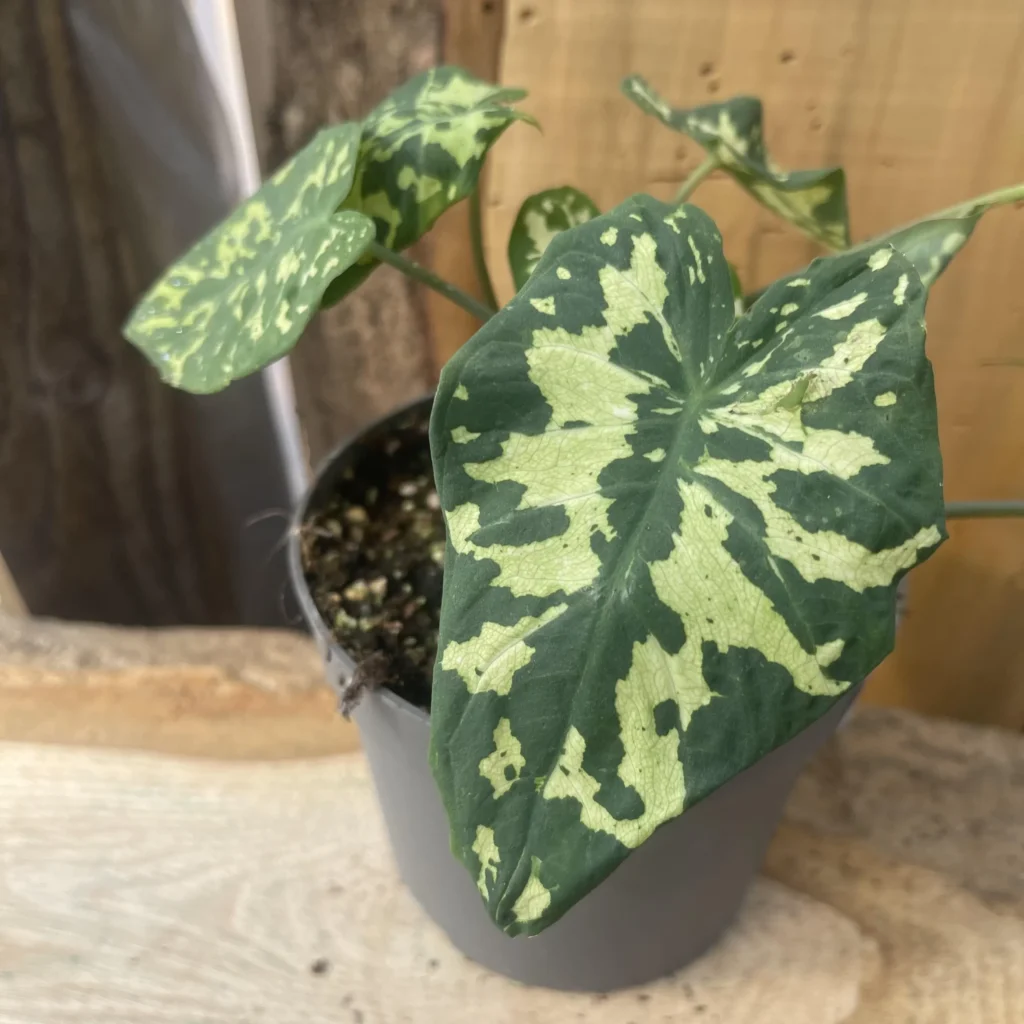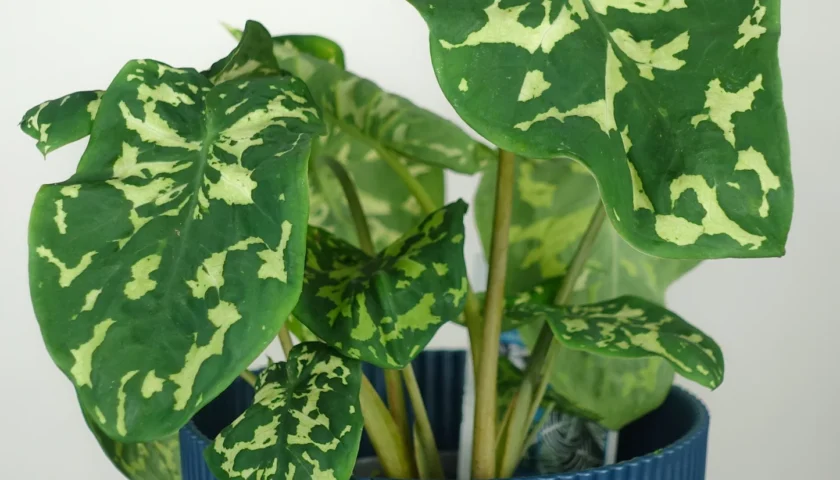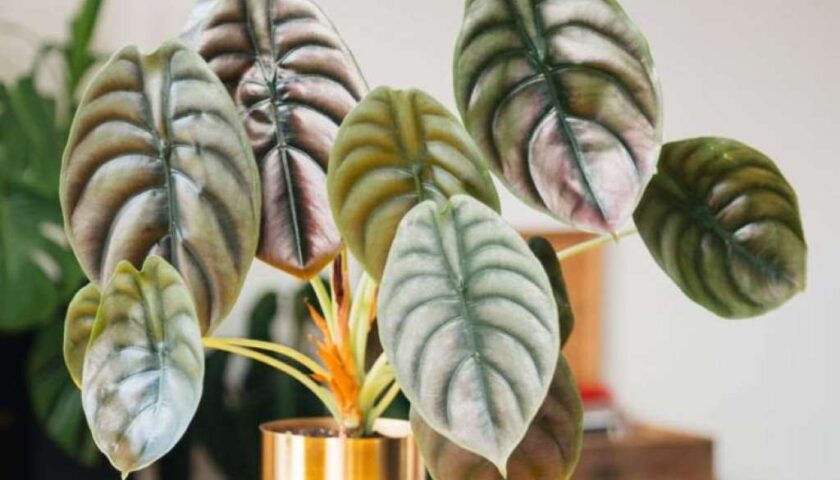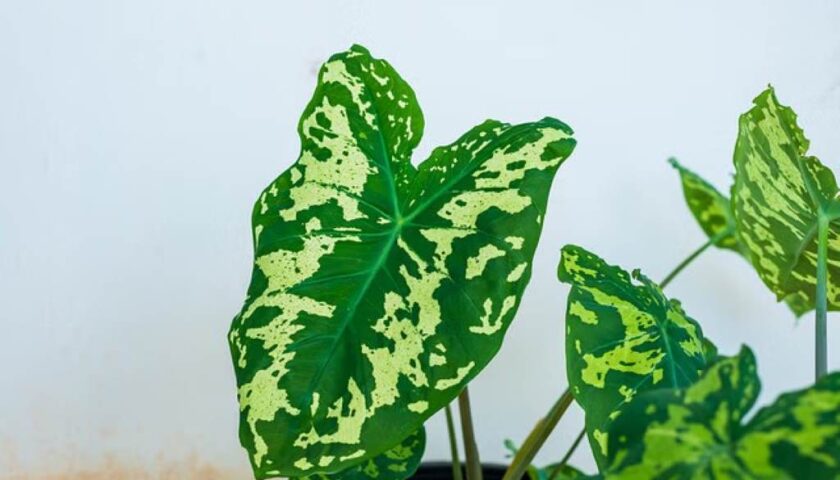If you’re a plant lover drawn to bold, tropical foliage, you’ve likely encountered the captivating Alocasia Hilo Beauty. This stunning houseplant, a type of elephant ear, boasts large, heart-shaped leaves adorned with a mesmerizing camouflage pattern of dark and light greens. It’s a true showstopper and a relatively easy-to-care-for addition to your indoor jungle.
Origins and Characteristics
Alocasia Hilo Beauty is a hybrid cultivar, its exact parentage uncertain. This adds to its mystique and makes it difficult to pinpoint its natural origins. The “Hilo” part of its name likely refers to Hilo, Hawaii, known for its cultivation of tropical plants.
Here’s what makes the Hilo Beauty so distinctive:
- Camouflage Leaves: The large leaves are this plant’s star attraction. The unique blend of dark and light green creates an eye-catching camouflage-like pattern.
- Size and Growth: Alocasia Hilo Beauty can grow to be a substantial houseplant, reaching heights of several feet.
- Upright Foliage: Its leaves tend to grow in a more upright manner compared to other Alocasia varieties, giving it an impressive vertical presence.
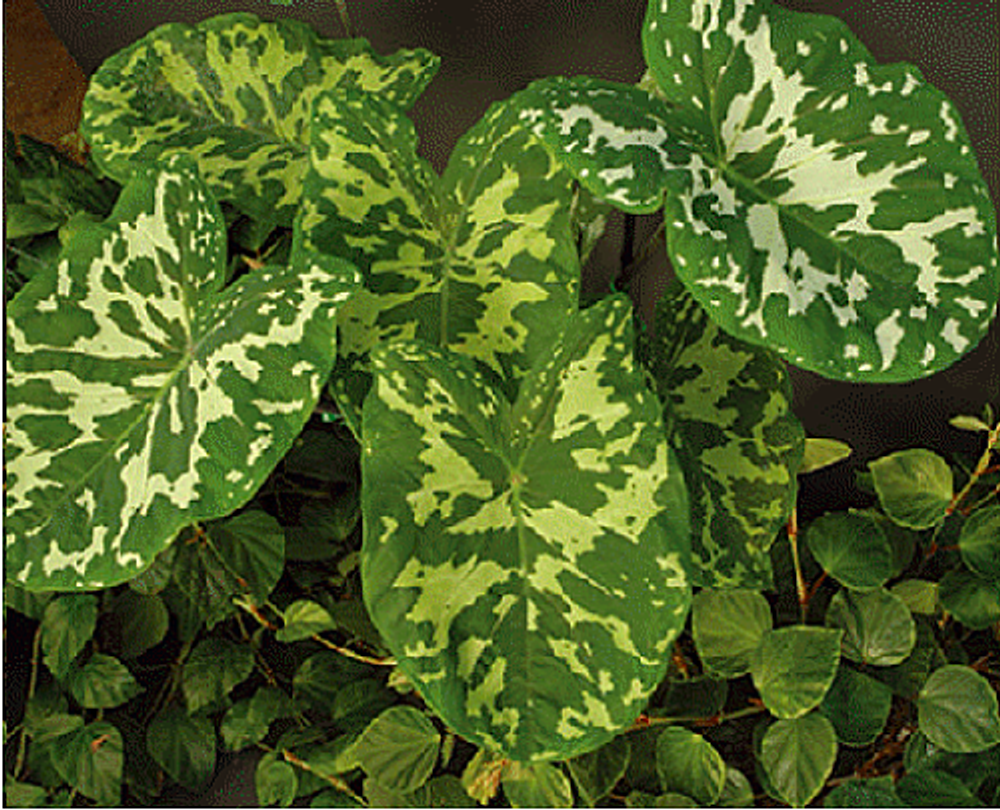
Caring for Your Alocasia Hilo Beauty
While slightly more demanding than some beginner houseplants, Alocasia Hilo Beauty’s care requirements are still manageable for both new and experienced plant owners.
Here’s a breakdown of its needs:
- Light: Prefers bright, indirect light. Avoid harsh, direct sunlight as it can scorch the leaves.
- Water: Key to a healthy Hilo Beauty! Keep the soil consistently moist, but not waterlogged. Allow the top inch or so of soil to dry out slightly between waterings to prevent root rot.
- Humidity: Being a tropical plant, it thrives in higher humidity. Regular misting, a pebble tray, or a humidifier will keep it happy.
- Temperature: Alocasia Hilo Beauty prefers warm environments, ideally between 65-85°F (18-29°C). Avoid cold drafts and sudden temperature fluctuations.
- Soil: Use a well-draining potting mix. A slightly acidic soil is ideal.
- Fertilizer: During the growing season (spring and summer), fertilize every few weeks with a balanced, diluted liquid fertilizer.
Read Also: When is White Eggplant Ripe? The Ultimate Guide
Potential Challenges
Like many Alocasias, the Hilo Beauty can be a little fussy at times. Watch out for these common issues:
- Yellowing leaves: Often a sign of overwatering. Check for root rot and adjust your watering schedule.
- Brown, crispy edges: Usually a sign of underwatering or too-low humidity.
- Pests: Susceptible to spider mites, mealybugs, and scale. Regularly inspect your plant for pests and address them promptly.
Propagation
If you’d like to share the beauty or simply want more of this plant, you can propagate it with some patience. Here’s the most common method:
- Division: During repotting, carefully separate the small offsets or ‘pups’ that grow from the base of the main plant.
- Rhizome Cuttings: For mature plants, you can uncover the rhizome (underground stem) and cut healthy sections with plantlets to root separately.
Alocasia Hilo Beauty: A Must-Have Statement Plant
If you’re ready to add a touch of the tropics to your space, the Alocasia Hilo Beauty is an excellent choice. It’s a truly captivating plant, sure to turn heads. With good care, it will reward you with lush, patterned foliage for years to come.
Extra Insights for Experienced Growers
- Dormancy: Alocasia Hilo Beauty can go dormant in winter. Don’t panic if it loses leaves—reduce watering and let it rest. New growth will appear in spring.
- Toxicity: Like all Alocasias, this plant contains calcium oxalate crystals, toxic to pets and humans if ingested. Keep it out of their reach.
Let me know if you have other areas regarding Alocasia Hilo Beauty that you’d like me to elaborate on!

